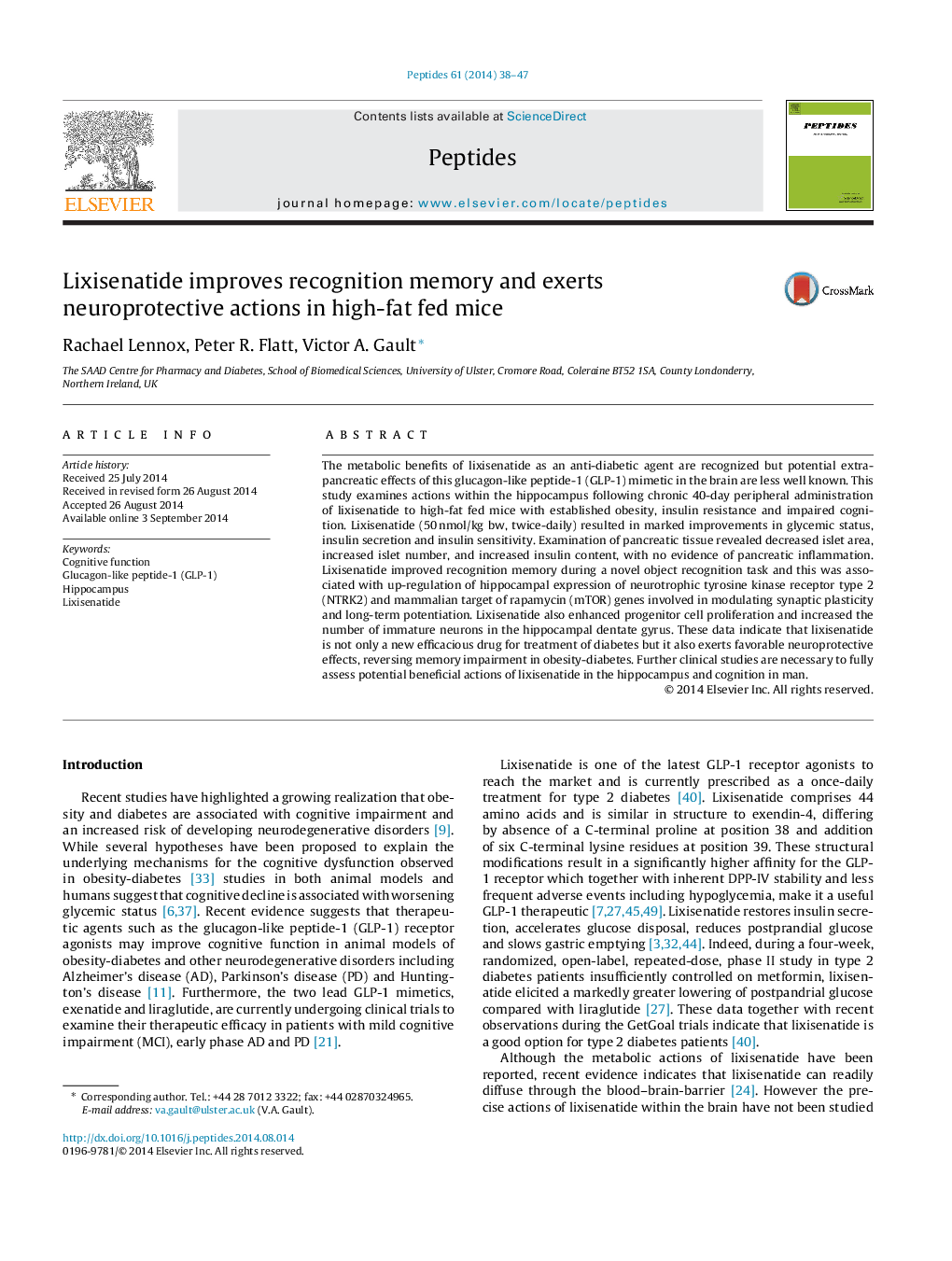| Article ID | Journal | Published Year | Pages | File Type |
|---|---|---|---|---|
| 8348236 | Peptides | 2014 | 10 Pages |
Abstract
The metabolic benefits of lixisenatide as an anti-diabetic agent are recognized but potential extra-pancreatic effects of this glucagon-like peptide-1 (GLP-1) mimetic in the brain are less well known. This study examines actions within the hippocampus following chronic 40-day peripheral administration of lixisenatide to high-fat fed mice with established obesity, insulin resistance and impaired cognition. Lixisenatide (50Â nmol/kg bw, twice-daily) resulted in marked improvements in glycemic status, insulin secretion and insulin sensitivity. Examination of pancreatic tissue revealed decreased islet area, increased islet number, and increased insulin content, with no evidence of pancreatic inflammation. Lixisenatide improved recognition memory during a novel object recognition task and this was associated with up-regulation of hippocampal expression of neurotrophic tyrosine kinase receptor type 2 (NTRK2) and mammalian target of rapamycin (mTOR) genes involved in modulating synaptic plasticity and long-term potentiation. Lixisenatide also enhanced progenitor cell proliferation and increased the number of immature neurons in the hippocampal dentate gyrus. These data indicate that lixisenatide is not only a new efficacious drug for treatment of diabetes but it also exerts favorable neuroprotective effects, reversing memory impairment in obesity-diabetes. Further clinical studies are necessary to fully assess potential beneficial actions of lixisenatide in the hippocampus and cognition in man.
Related Topics
Life Sciences
Biochemistry, Genetics and Molecular Biology
Biochemistry
Authors
Rachael Lennox, Peter R. Flatt, Victor A. Gault,
